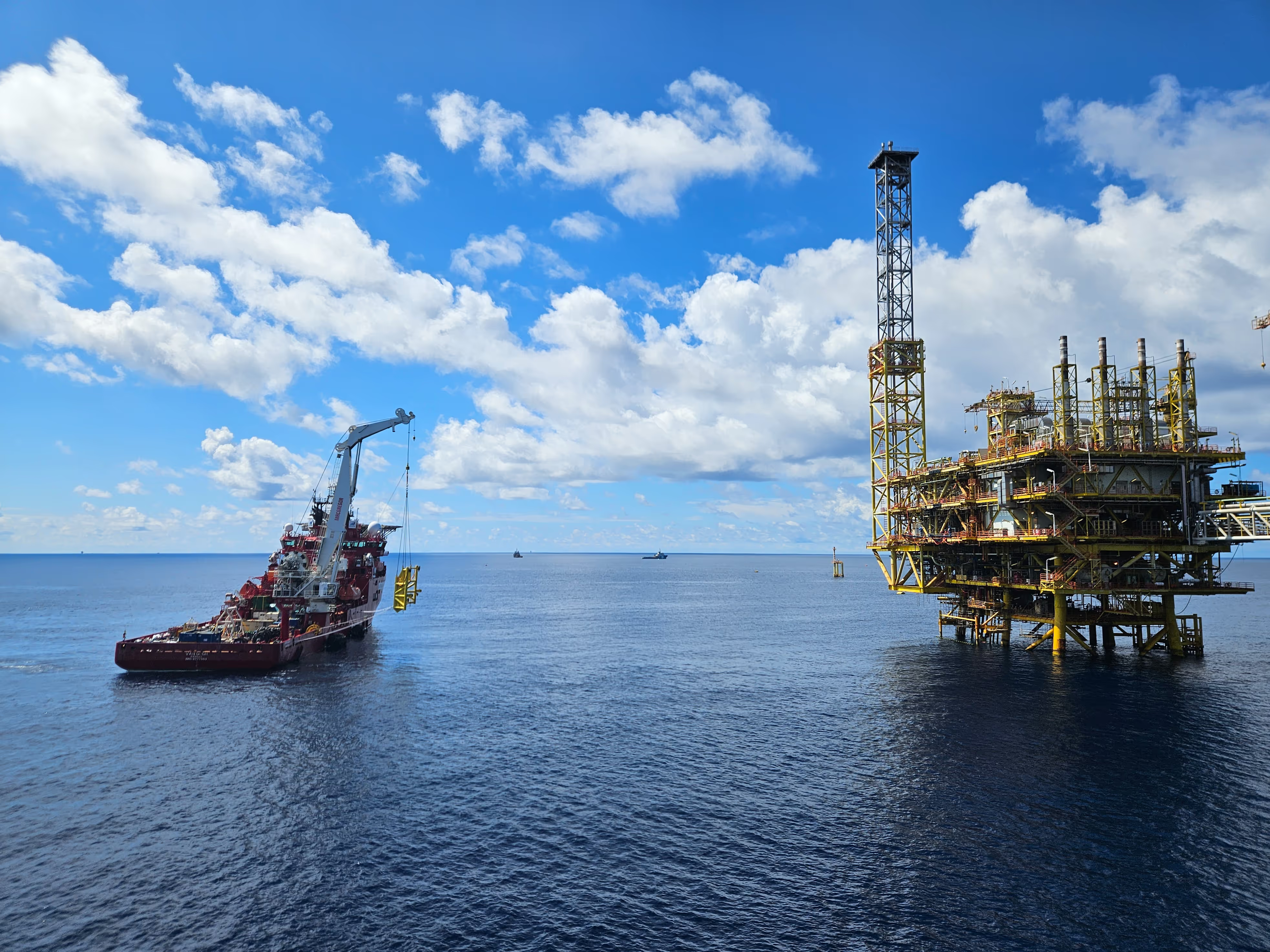ExxonMobil commissioned Conbit to replace the existing flare tip weighing 3 tonnes (3,000 kg) with a new 4 tonnes (4,000 kg) on the Marlin B platform in Australia.
The Marlin Complex EP, Consisting of Marlin A and B, is a hydrocarbon production facility located 42 km off the Gippsland coast, Australia.
Watch how we prepare and execute
Watch how we prepare and execute

The power of preparation
Conbit prepared extensively. During the structural design and engineering phase, they considered the environmental conditions, such as temperature, wind, and sea state. They also conducted a feasibility study, which indicated that the flare tip access platform could carry the flare tip and lifting system.
Safety meetings were planned, ensuring all crew members were fully trained and briefed.
Once the equipment arrived at the location, site preparation was done. The crew unpacked the containers, then installed the winches, and lastly cleared the working area. Next was to install all the lifting and rigging equipment to perform the lift.
The job was performed by five crew members, three at the FTAP, one at the deck and winch location, and one at the supply vessel. A load test was done at Conbit’s yard in Eindhoven, witnessed by a client representative. After that, the crew shipped all the equipment in 20ft containers.
Methodology
Conbit opted for a drop-and lower-to-the-supply-vessel solution, whereby the flare tip was handled on the flare tip platform by a gantry-type lifting structure. The gantry lifted the flare tip over the platform's edge and lowered it onto a supply vessel using a lift line. This lift line, coming from a winch installed on one of the platform decks, connected to the structure underneath the flare tip platform.
Conbit developed a reputation in the industry for flare tip replacements. Their exemplary preparation and planning stages included testing the feasibility of the mechanical handling method. This gave the impression and confidence to their client that replacement of the flare tip project will be carried out successfully.
The project was completed within the five days shutdown.
PRoject case study pdf
Download the PDF of this project case study here.
Thanks for leaving your email address. You can now download the requested case study
Oops! Something went wrong while submitting the form.
No items found.
Related Cases
Related Services
Maritime
Oil & Gas
Petrochemical
Wind
Lifeboat Davit Installation Services
Onshore & Offshore
Oil & Gas
Petrochemical
Wind
Maritime
Living Quarter Installation Services
Onshore & Offshore
Oil & Gas
Petrochemical
Wind
Maritime
Caisson Replacement Services
Onshore & Offshore
Maritime
Oil & Gas
Petrochemical
Crane Replacement Services
Onshore & Offshore
Oil & Gas
Petrochemical
Flare Tip Replacement Services
Onshore & Offshore
Maritime
Wind
Oil & Gas
Inspections
Onshore & Offshore
Oil & Gas
Petrochemical
Wind
Modification
Onshore & Offshore
Oil & Gas
Petrochemical
Wind
Maintenance
Onshore & Offshore
Oil & Gas
Wind
Petrochemical
Maritime
Installation
Onshore & Offshore
Oil & Gas
Petrochemical
Decommissioning
Onshore & Offshore
Contact
We're here to answer your questions
Do you have any technical questions, general enquiries or do you need additional information? Don’t hesitate to contact our experts. With their expertise and experience in lifting services, they will gladly help you.
You can contact us by phone or email. We’re looking forward to your questions!
You can contact us by phone or email. We’re looking forward to your questions!













.png)
-1.avif)


